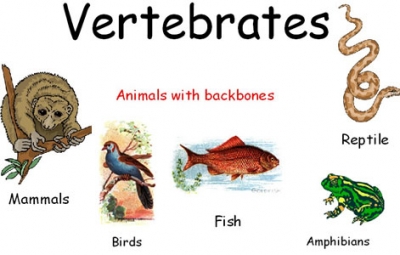
Mammals
Only mammals have a lower jaw that is hinged directly to the skull. They also have specialized teeth, which means that they can bite, grip, tear, cut, chew, and grind their food. The planet’s largest animals belong to this group, including whales, elephants, and tigers.
Mammals are sometimes divided into three types based on how they give birth and take care of their young.
- Live young – Most mammals give birth to live young (instead of laying eggs like birds or reptiles). These mammals are called placental mammals.
- Marsupials – Marsupials are special types of mammals that carry their young in a pouch. Some marsupials include the kangaroo, the koala, and the opossum.
- Egg laying – A few mammals lay eggs, they are called monotremes. Monotremes include the platypus and the long-nosed spiny anteater.
Fish
The first vertebrates were fish. Most fish, including carp, have a hard, bony skeleton. However, sharks and rays have a softer skeleton, which is made of a flexible material called cartilage. Fish have developed special senses, too. Because water transmits sounds, disperses chemicals, and conducts electricity better than air, fish rely less on their vision and more on their hearing, taste, and smell. Many can detect motion in the water using a special row of scales with sensors known as the lateral line. Others can find their prey and even navigate by detecting electrical charges.
One reason fish are so diverse is that 70 percent of the planet is covered in water. The animals in this group live in a variety of habitats ranging from coral reefs and kelp forests to rivers, streams, and the open ocean. Another is that fish are very old on the evolutionary scale. According to fossil records, they have been on Earth for more than 500 million years! The total number of living fish species—about 32,000— is greater than the total of all other vertebrate species (amphibians, reptiles, birds, and mammals) combined.
Reptiles
Reptiles have highly bendy backbones. Whether they have four legs, like lizards, or no legs at all, like snakes, most reptiles are fast movers and efficient hunters. Reptiles are covered with scales to protect themselves. Reptiles are capable of living on both land and in water. The body structure of the reptiles is designed to make them adapt to survive both on land and in water. The feet of the reptiles have claws in their toes and the body is covered with scaly skins.
Reptiles are cold blooded animals. They regulate their body temperature by adapting to the outside temperatures. To keep them warm they stay in the sun and to keep them cold they stay in the water or hide under the ground or rock. Reptiles are air breathing animals and give birth to the young one by laying eggs. Usually reptiles breathe through lungs but sometimes they can suck up oxygen in the water through the membranes present in the mouth.
Birds
Birds have special bodies that allow them to fly. Their arms have become wings and their skeleton has strong, but light bones, which makes flying easier. Only birds have feathers, which keeps them warm and help them fly.
Birds are warm blooded vertebrates that belong to the class aves. The body of the birds is streamlined and is covered with feather and its forelimbs are converted into wings. Today about 9,703 species of birds live all over the globe and they are divided into 23 orders, and 142 families.
Birds are the only creatures in the world that have the capacity to walk, fly, sing, dance and swim. Birds are warm blooded animals with high body temperature that is necessary for their flights. The most highlighted characteristic of the birds is its feathers. No other living organisms in the world have wings (feathers). They are the light weight organisms and they have the capacity to grow feathers each year.
Amphibians
These were the first four-limbed vertebrates to walk on Earth. Their skeletons are a mix of bone and cartilage. Some amphibians such as frogs are good at swimming and jumping.
Amphibians are cold blooded animals that posse’s backbone and are the direct offspring of fishes. They have the capacity to live both on land as well as in water. Amphibians have complex circulatory system unlike fish that have scales. The larvae of the amphibians that develop in the water breathe through gills while the adults breathe through skins and lungs. Some amphibians are terrestrial at some point of time in their life cycle.
Picture Credit : Google




